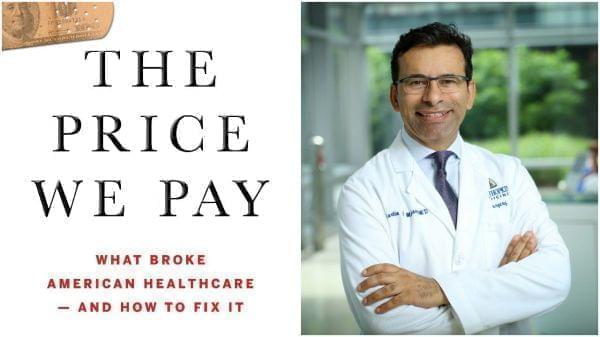‘The Price We Pay’ And The Increasing Cost Of Health Care; Paternity Leave And Life Satisfaction

Photo Courtesy of Dr. Marty Makary
The U.S. spends more on health care per person than any other country. Why are we paying so much? And where is all that money going? That’s part of Dr. Marty Makary’s latest book “The Price We Pay." Plus, there’s a lot of research out there that shows paid maternity leave makes a big difference for mothers and children. Now, we’re learning more about the impact of paid leave for fathers.
'The Price We Pay' And The Increasing Cost Of Health Care
The United States spends more than $3 trillion on health care every year. But all that spending doesn’t mean we have the best health outcomes.
Often, it’s the reverse. And lots of people are feeling the squeeze of rising health care costs.
Today, one in five Americans has medical debt in collections.
A new book explores how the skyrocketing costs of health care are bankrupting people and highlights what you can do to protect yourself.
It’s called “The Price We Pay.” We were joined by the author, Dr. Marty Makary. He’s a surgeon and professor of health policy at Johns Hopkins University.
"We need to restore public accountability to hospitals," Dr. @MartyMakary. "That means when you get a bill that is unfair, you deserve and should demand an ability to appeal certain things on there... go to the CFO... talk to your doctor... we want to help."#ThePriceWePay
— The 21st (@21stShow) October 10, 2019
Paternity Leave And Life Satisfaction
Fewer than one in five Americans have access to paid family leave, according to the Bureau of Labor Statistics. That’s because the U.S. has no federal policy on the issue, so whether you have it or not really just depends on where you work.
Researchers are learning more and more about the positive effects of family leave. There’s been lots of research on how this helps mothers, but it turns out paid paternity leave is also good for pretty much everybody as well.
This is true even though many fathers in countries with paid paternity leave don’t necessarily take the full amount of time they have.
Karen Kramer an assistant professor at the U of I’s Department of Human Development and Family Studies. She co-authored this new study. Matt Boresi is the co-host of a podcast called the Paternity Test.
Karen Kramer + @ACESIllinois looked at couples where the father took took paternity leave vs. those who didn't.
— The 21st (@21stShow) October 10, 2019
She says that even a small amount of days off "positively affected the relationship and dynamic within the couple in the long term." https://t.co/FuH4kbT9S8
"It was a difficult birth... when your wife is also ailing that's also tough. So to then be gone for a significant portion of the day was painful." -Matt Boresi from @thedadtest on his experience after his daughter was born.
— The 21st (@21stShow) October 10, 2019

